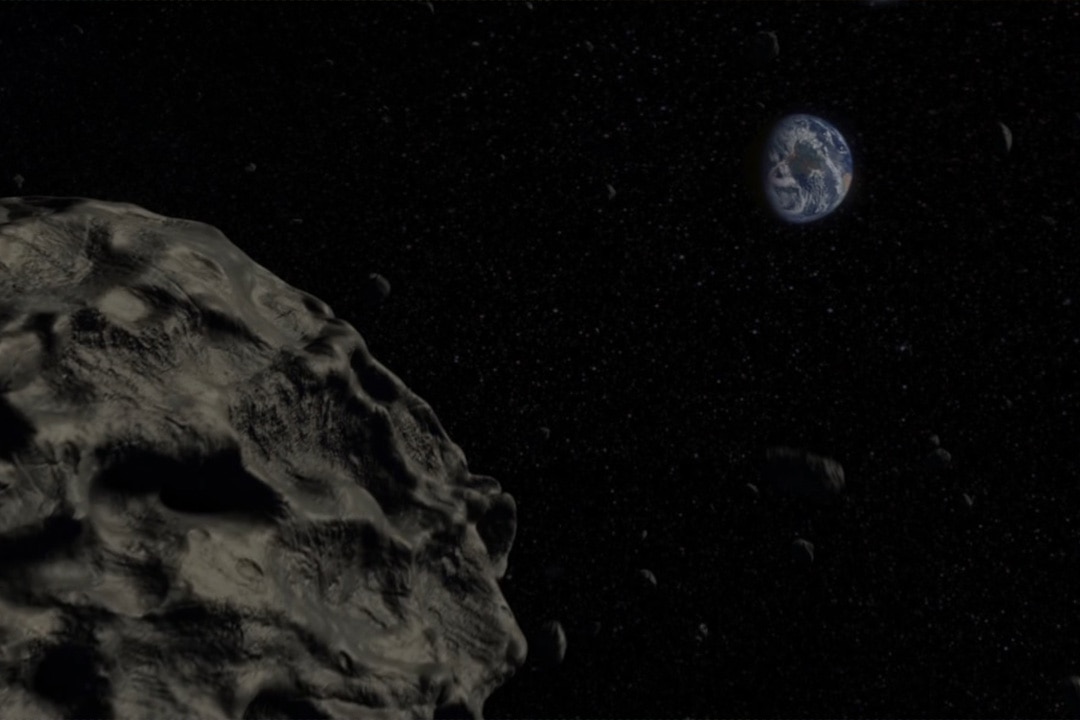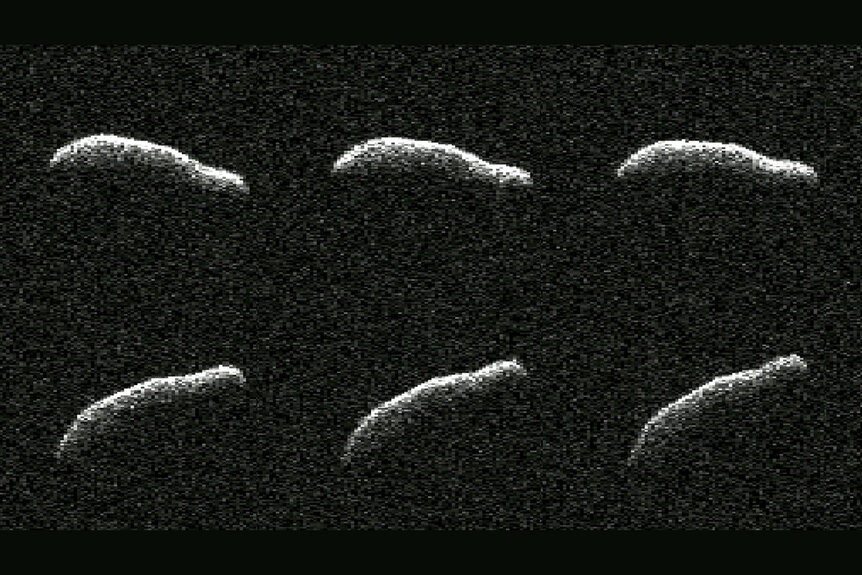Create a free profile to get unlimited access to exclusive videos, sweepstakes, and more!
NASA snapped close-ups of a passing asteroid the size of the Empire State Building
Make sure to get its good side.

In the 2014 disaster movie Asteroid vs. Earth (now streaming on Peacock!), astronomers discover a wave of impactors on a collision course with our planet. With an extinction-level threat breathing down our necks, very little time, and even fewer options, the heroes of Earth must act quickly or witness the destruction of our species.
In the real world, it’s unlikely that a killer asteroid (or a wave of them) could sneak up on us without our noticing. There are organizations around the world, including NASA’s Center for Near Earth Object Studies (CNEOS), which are tasked with identifying, describing, and tracking near Earth objects which might pose a threat to all or part of the planet. Recently, astronomers got an up-close look at a passing asteroid when 2011 AG5 passed by the Earth within approximately 1.1 million miles. That’s far enough away (about five times the distance from here to the Moon) that it didn’t pose any threat to us, but it was close enough that astronomers jumped at the chance to study it a little more closely.
RELATED: The astronomical community accurately predicted an asteroid impact
On Feb. 3, 2023, the asteroid known as 2011 AG5 made its closest approach with Earth, toppling slowly end over end as it cruised by. Astronomers from NASA’s Jet Propulsion Laboratory (JPL) in Southern California tracked and observed the asteroid using the Goldstone Solar System Radar, a 230-foot (70 meter) dish in Barstow, California, and retrieved incredible images from a distance of more than a million miles.
The asteroid was first discovered in 2011, at which point it briefly made headlines when early calculations showed a small probability that it would impact the Earth. Further observations ruled out an impact in the near future and soon AG5 fell out of the news cycle. While the public may have forgotten about this lonely space rock, astronomers certainly didn’t. Instead, they waited patiently for it to swing back around.
Despite the asteroid’s incredible distance from the Earth, astronomers were able to resolve an impressive level of detail, including a concavity in one of the asteroid’s hemispheres and tiny surface features only a few feet in length. They also determined that the asteroid completes a tumble, head over heels, every nine hours and has a surface as black as charcoal. Perhaps the most striking detail is the asteroid’s unusual shape.
RELATED: NASA begins construction on NEO Surveyor, a next-gen asteroid hunter
Asteroids have too little mass to pull themselves into a sphere under the pull of their own gravity, but they do tend to prefer boxier shapes over stretched out ones. For whatever reason, 2011 AG5 either didn’t get the memo or tossed it out with the trash. Astronomers noted that this asteroid is one of the most elongated they have ever seen, coming in at roughly 1,600 feet (500 meters) in length and 500 feet (150 meters) in width, measurements which are approximately comparable to the world’s 54th tallest building.
In addition to providing a striking close-up look of a distant asteroid, the measurements also dialed in on 2011 AG5’s orbit around the Sun. Astronomers calculated an orbit of 621 days, ensuring that over enough cycles the Earth and 2011 AG5 are destined to cross paths again. According to our models, the next close approach will happen in 2040 when 2011 AG5 passes within 670,000 miles of the Earth on its way around the Sun.
There is no risk of the asteroid impacting the Earth at that time, or any time in the foreseeable future, but its passage in 2040 will give us another opportunity, even closer this time, to spy a cosmic object just passing through.
Tired of hearing about when asteroid interactions go right? Check out Asteroid vs. Earth, streaming now on Peacock!



























